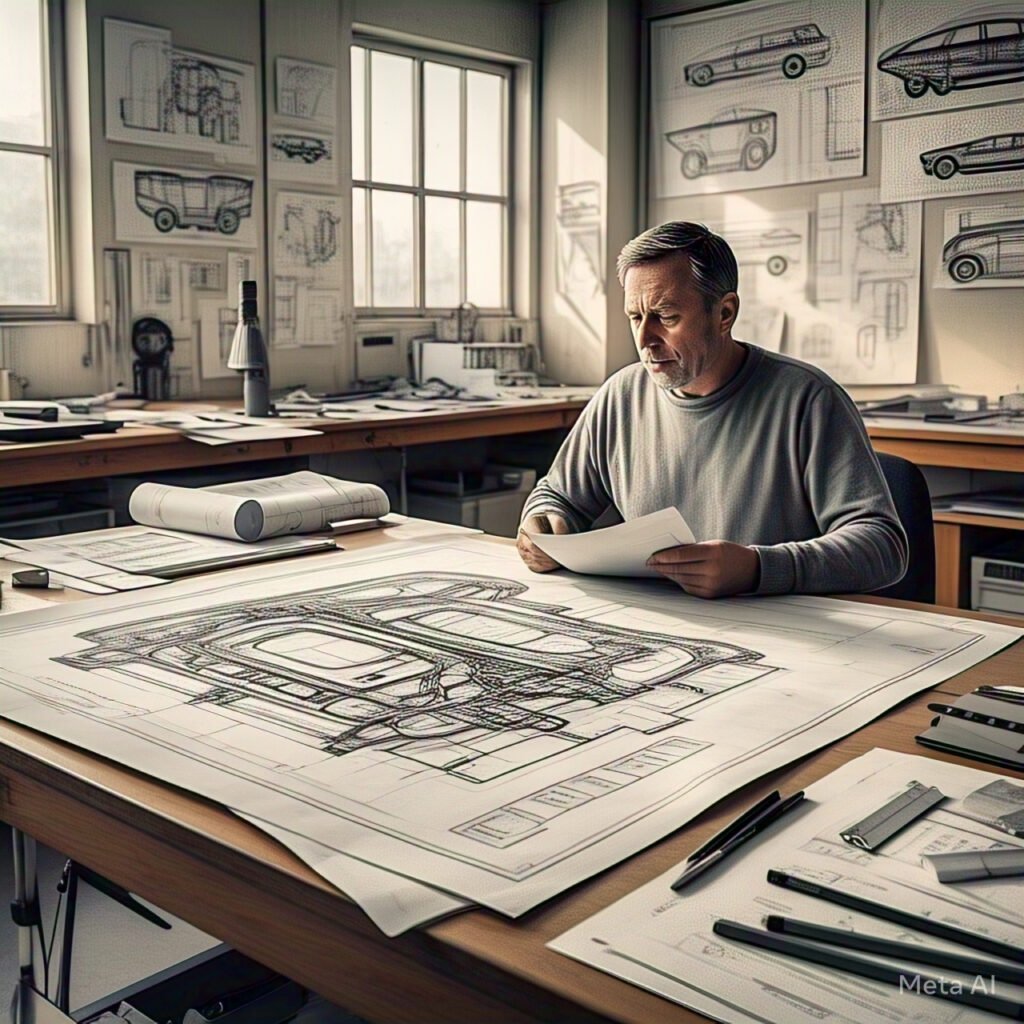Vehicle design, also known as automotive design, is a field that combines art, engineering, and technology to create the appearance and functionality of automobiles. It involves several key areas:
1. The Design Stages of a Vehicle a) Concept Development
Designers sketch and create digital models of new vehicle ideas.
Focuses on aesthetics, aerodynamics, and futuristic trends.
b) Exterior Design
Shapes the body, headlights, grille, windows, and aerodynamic structure.
Uses CAD (Computer-Aided Design) and clay modeling.
c) Interior Design
Focuses on dashboard, seating, infotainment systems, and ergonomics.
Ensures comfort, safety, and user-friendly interfaces.
d) Engineering & Prototyping
Engineers analyze aerodynamics, materials, and crash safety.
Prototypes are built and tested for performance, durability, and safety.
2. Important Aspects of Vehicle Design
Aerodynamics is the science of reducing air resistance to increase fuel economy. Material Selection – Lightweight and strong materials (aluminum, carbon fiber).
Technology Integration – Touchscreens, AI systems, electric vehicle tech.
Safety Features – Airbags, ADAS (Advanced Driver Assistance Systems).
Sustainability – Focus on electric, hybrid, and hydrogen-powered vehicles.
3. Software Used in the Design of Vehicles Autodesk Alias – 3D surface modeling for car exteriors.
CATIA – Used by automotive companies for detailed design.
SolidWorks – Engineering and mechanical design.
Blender & 3ds Max – For rendering and concept visualization.
4. Careers in Vehicle Design
Automotive Designer – Creates car exteriors and interiors.
Transportation Designer – Works on futuristic mobility concepts.
Industrial Designer – Focuses on ergonomics and aesthetics.
Automotive Engineer – Works on mechanical and safety features.
By Rongali Devika .



